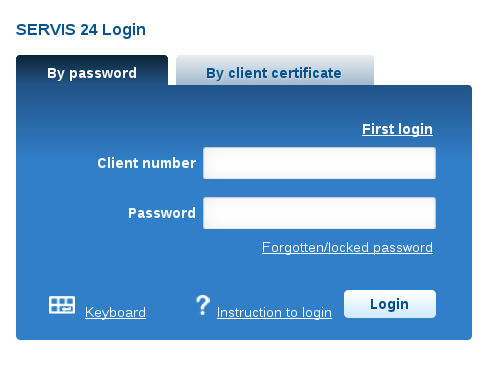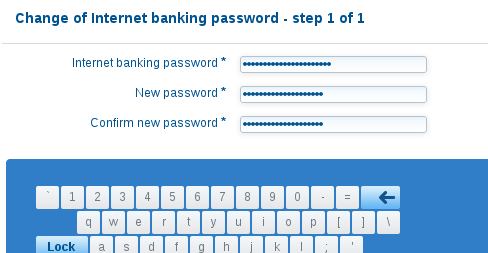Basic Authentication
- The only authentication option in 1996 when HTTP 1.0 came out.
- To remind you what it looked (looks) like:

Status code 401 Unauthorized. It means either
- no authentication was attempted;
- the [login, password] pair supplied with the HTTP request in the
Authorizationheader was wrong.
Basic Authentication: Pros
- Access protection for static content as well.
- Completely handled via HTTP server configuration.
- No logic needed in the content (in CGI).
User identifier can be consumed in CGI scripts via REMOTE_USER environment variable.
- Similar mechanisms used for other execution frameworks.
- Or dedicated method calls (
request.getRemoteUser()).
- Various authentication providers emerged, including databases and LDAP lookups.
Basic Authentication: Cons
- One 401 status for both "please enter login and password" and "you probably mistyped password" situations.
- Suboptimal UI in browsers: one popup window type, ending loop with Cancel, no logout (forget credentials) functionality.
- Optional authentication hard to achieve.
- Nothing beyond [login, password].
- Digest introduced by HTTP 1.1 did not address either concern.
Authentication in applications
- Basic Authentication was used heavily.
- But developers and users wanted more.
- Especially better control and user experience.

|

|

|
Cookie-based sessions
- Codified ex-post, based on real-life implementations in browsers.
- Originally intended for small customizations and user preferences.
Cornerstone of authentication in today's web applications.
- Applications handle logon form POST submissions or other authentication process, including anonymous users.
- Applications create sessions internally, HTTP response carries
Set-Cookieheader with session identification. - Cookie sent by browser with each subsequent HTTP request in the
Cookieheader.
- The authentication decision has moved to applications completely.
- Applications manage their own (DB) schemas of users, groups, roles.
- Who remembers
REMOTE_USER? Who needsREMOTE_USER?
GSSAPI/SPNEGO/Kerberos/Negotiate
- Server's 401 HTTP response contains
WWW-Authenticate: Negotiate. - Browser tries to get Kerberos service ticket and use the GSSAPI data in
Authorizationheader. - No prompting. (But no confirmation either.) Effectively, single-sign-on.
- In Apache supported by mod_auth_kerb, outside of application.
- Application might not have access to the keytab needed to verify the GSSAPI data.
- Application gets the authentication result.
REMOTE_USERre-emerges. - http://www.ietf.org/rfc/rfc4178.txt
- http://www.ietf.org/rfc/rfc4559.txt
- Cookies still useful — you want to avoid negotiate on each request.
Other mechanisms
Other authentication mechanisms might need to use credentials and storage that HTTP server (Apache) has access to but the application does not.
- SSL client authentication.
- Security Assertion Markup Language (SAML).
- There can be additional checks about account's validity (PAM).
- They all might or might not be needed (supported, enabled, configured) in a particular deployment of each web application.
- Is it time to move the authentication decision back in front of the web application?
- Bring back
REMOTE_USER?
Overview of existing modules
| Authentication Method | Apache Authentication Module |
|---|---|
| Pure Application Level | None |
| Kerberos SSO (ticket) | mod_auth_kerb |
| SAML-Based | mod_auth_mellon |
| Certificate-Based | mod_nss |
| mod_ssl |
New life for GSSAPI/Kerberos
- Module mod_auth_gssapi by Simo Sorce.
- Replacement of mod_auth_kerb using only GSSAPI calls.
Original mod_auth_kerb configuration:
LoadModule auth_kerb_module modules/mod_auth_kerb.so AuthType Kerberos KrbMethodNegotiate On KrbMethodK5Passwd Off KrbAuthRealms EXAMPLE.COM Krb5KeyTab /etc/http.keytabWith mod_auth_gssapi:
LoadModule auth_gssapi_module modules/mod_auth_gssapi.so AuthType GSSAPI GssapiCredStore keytab:/etc/http.keytab- Recent MIT krb5 and Apache HTTP server 2.4 needed.
System Security Services Daemon
- Authentication and identity services on operating system level.
Host-based access control (HBAC) when used with IPA server.
Individual users
or user groups
Hosts
or host groups
Services
(ssh, ftp, sudo, ...)
Mix them into rules sssd can consult IPA to check access - IPA is centralized identity, authentication, and authorization provider.
- Other access control schemes possible, depending on the identity source against which sssd is configured.
- Module
pam_sss.somakes sssd services available via PAM.
PAM for Web applications
- Apache module mod_authnz_pam. For 2.2 and 2.4.
- PAM-based authorization of users authenticated by other modules.
- Replace
requires valid-userwithrequires pam-account <PAM-service-name>
Configure
/etc/pam.d/<PAM-service-name>.- With
pam_sss.soand sssd against IPA, HBAC check will be done. - HBAC service name has to match the PAM service name.
- Use any service name you want: crm-prod, wiki-test, intranet, ...
- With
- Especially useful for SSO that should not reach applications.
- Use as Basic Authentication provider also possible:
AuthBasicProvider PAM AuthPAMService tlwiki
PAM for applications' logon forms
- Provided by Apache server: mod_intercept_form_submit.
| Logon form submission | ||
| ↓ | ||
| Module | Module intercepts the POST HTTP request | |
PAM auth is run with [login, password] pair (when found) | ||
| Authentication passes | Authentication fails | |
REMOTE_USER is set to login | EXTERNAL_AUTH_ERROR is set to PAM message | |
| Application | Consumes REMOTE_USER | Gets chance to authenticate internally |
PAM for apps' logon forms (cont'd)
- No 401 status ever.
- Uses
mod_authnz_paminternally. - The same look of the logon screen, authenticating against central identity provider.
<Location /app/login> InterceptFormLogin user_fld InterceptFormPassword passwd_fld InterceptFormPAMService <PAM-service-name> </Location>
New modules
| Authentication Method | Apache Modules | |
|---|---|---|
| Authentication | Access Check | |
| Application | None | |
| GSSAPI/Kerberos | mod_auth_kerb | mod_authnz_pam |
| mod_auth_gssapi | ||
| SAML | mod_auth_mellon | |
| Certificate | mod_nss | |
| mod_ssl | ||
| Form-Based | mod_intercept_form_submit | |
Additional user information
- Web applications nowadays need more than just login name.
Additional attributes for nice user experience, as well as authorization.
- Email address, full name, phone number, ...
- Group membership.
- For centrally-managed users, these should come from the central identity provider.
- Especially when applications autocreate user records.
- Module mod_lookup_identity uses D-Bus interface of SSSD to retrieve additional data about authenticated users.
Additional user information (cont'd)
Proposing other environment variables beyond
REMOTE_USER:REMOTE_USER_EMAIL,REMOTE_USER_FULLNAME, ...REMOTE_USER_GROUPS,REMOTE_USER_GROUP_N,REMOTE_USER_GROUP_1, ...
LookupUserAttr mail REMOTE_USER_EMAIL " " LookupUserAttr givenname REMOTE_USER_FIRSTNAME LookupUserAttr sn REMOTE_USER_LASTNAME
LookupUserGroupsIter REMOTE_USER_GROUP
LookupOutputGroups REMOTE_USER_GROUPS :
Module overview
| Authn Method | Apache Modules | ||
|---|---|---|---|
| Authentication | Access Check | Extra User Info | |
| Application | None | ||
| GSSAPI | mod_auth_kerb | mod_authnz_pam | mod_lookup_identity |
| mod_auth_gssapi | |||
| SAML | mod_auth_mellon | ||
| Certificate | mod_nss | ||
| mod_ssl | |||
| Form | mod_intercept_form_submit | ||
External authentication in applications
- Web applications should re-learn to accept
REMOTE_USER. - Some changes to support the external authentication and identity are typically needed in application code.
- The reward is much richer matrix of possible deployments.
- Use of the same HBAC mechanism that enterprises use for OS.
Already implemented:
- Spacewalk
- Foreman
- ManageIQ
- Django being investigated.
Conclusion
- PAM for access to central authentication provider.
- New variables for additional
REMOTE_USER_*attributes. - Can we agree on variable names? Less work for application developers.
- By no means should applications drop their existing functionality that served them well, this is merely an additional possibility.
Your favorite application or framework not supporting
REMOTE_USER_*?- While we might not be able to add the feature ourselves, we will be happy to help people.
- Explore the modules, let us know what you think.
References
- http://www.freeipa.org/page/Web_App_Authentication
- http://www.freeipa.org/page/Environment_Variables#Proposed_Additional_Variables
- https://github.com/modauthgssapi/mod_auth_gssapi
- http://www.adelton.com/apache/mod_authnz_pam/
- http://www.adelton.com/apache/mod_intercept_form_submit/
- http://www.adelton.com/apache/mod_lookup_identity/
- <freeipa-users@redhat.com>
- Jan Pazdziora <jpazdziora@redhat.com>
